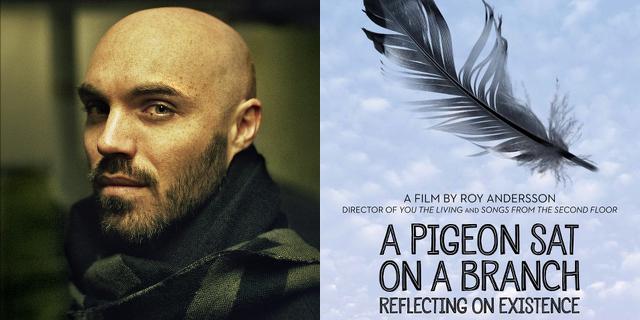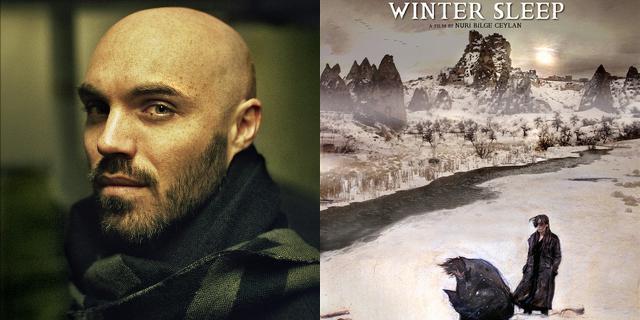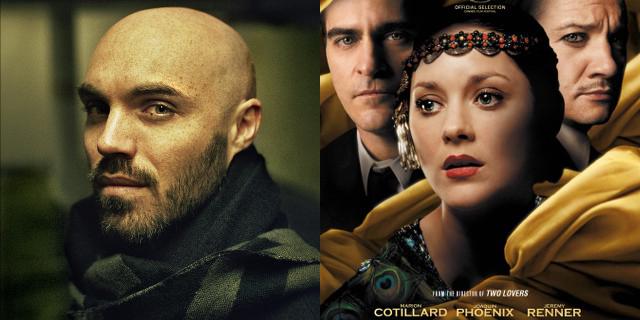I watched Roy Andersson’s A Pigeon Sat on a Branch Reflecting on Existence and promptly came down with a terrible flu.
My throat began to itch around the middle of the film; during a climactic dream sequence, my sinuses began to pulse. Before too long, the film was over and I’d slipped into one of those hotly fevered states that exists somewhere between dreaming and sleep paralysis: your body temperature shifts rapidly between unbearably hot and freezing cold, your sheets turn into swamplands, and worst of all, as unknown forces berate your cerebellum, the same images cycle past your eyes, flashing briefly and repeatedly ad infinitum.
In this case, however, the subject of these half-awake fever dreams was the film I’d just watched, whose form proved uniquely sympathetic to my state. Like all of Andersson’s feature films to date, A Pigeon… is composed of a series of canted tableaus, each one encompassing an entire scene and lasting anywhere from one minute to 10. Andersson’s camera never moves; he finds just the right angle for each scene, generally from the corner of his beautifully designed sets, and from that vantage observes as his various scenarios play themselves out. There’s a rigidity to his style, and a pace which, when combined with the vague surrealism at play, made this the perfect work to reflect upon over the 12 or so hellish hours that I found myself sick in bed.
As my fever subsided, I conceived of a conversation between Andersson and the Wachowskis in a cottage on a windswept island off the coast of Sweden...Perhaps it was the strength of his compositions that gave me reprieve! It makes sense that they might wrestle the spastic fluctuations of my brain into submission with their gentle maximalism. Ninety percent of this movie is composition — perhaps more, depending on your definition of the word. Every line is perfectly placed, the horizontals rarely even but perfectly balanced by the leaning verticals that splay out across the image. Objects and props are arranged in perfectly ascending or descending order, chief among them the characters, these variously sized globules of humanity that stand and seethe and come to great rest over the course of 39 miniature-esque dramas. Their narrative balance is equally precise. Each scene, no matter how small, has a rhythm that ties it to the vignette that follows. I kept turning one scene over and over in my head, in which a woman on a park bench gently rocks her baby’s pram back and forth, cooing happily to it. Then, seemingly arbitrarily, she slips her head under the handle of the pram, which proves to be the climax of this particular scene. Why does this image have the impact that it does? A sweet moment turned suddenly constrictive? Why does this scene linger? The answer is that the film is explicitly designed to make it do so.
There are other moments that keep spinning through the zoetrope of my brain, even now that I’ve awoken from that restless night. One line of dialogue, uttered by one of the two traveling salesman whose sad narrative forms the spine of the film: “I love my parents,” he moans, “but I hope I don’t meet them in heaven.”There’s a scene in which King Charles XII of Sweden saunters into a bar for a drink of water en route to battle, and the way his horse rears up at the plebeians around him makes for a shocking display of might and power. And then there’s the nightmare vision of British Colonialism that rises out of nowhere towards the end of the film, and which evokes a sense of true anger and despair amidst so much droll whimsicality. It’s so terrible that when it proves to be an actual nightmare, the poor fellow who’s had it can’t even describe it.
A Pigeon… is being presented in the United States by Darren Aronofsky and Alejandro G. Iñárritu. Another pair of filmmakers who have sung Andersson’s praises are the Wachowski siblings, who I think spent as much time talking about him during their press tour for Jupiter Ascending as they did their own film. They mentioned being so moved by his work that they’d made a pilgrimage to visit him. As my fever subsided, I conceived of a conversation between the three of them in a cottage on a windswept island off the coast of Sweden, the details of which I’ve now forgotten, although I believe it was sweet and charming and beautiful and awkward for a minute or two. I also wondered what they might have lifted from him. All artists take from those they admire; Andersson himself has spoken about his love of Bruegel and Hopper, and indeed their influence can be seen quite clearly in his films. I suppose the Wachowskis’ Cloud Atlas might have something of Andersson in it; its florid love for humanity in all its risible states, and its optimism in the face of the tragedy of existence, are certainly elements that Andersson trades in.
Indeed, those themes and the form in which they’re presented will be of no surprise to anyone who’s seen Andersson’s previous films, Songs from the Second Floor and You, the Living. If memory serves, the earlier films dealt more openly with outright Gilliam-esque absurdity, whereas A Pigeon… is more content to find absurdity in the mundane. Perhaps the level of white pancake-makeup on the actors’ faces is slightly less now than it was in You, the Living. Whatever their differences, these films are all unmistakably parts of a whole; all three could in effect function as one, just as any single scene from the trilogy could be a film unto itself. They represent a singular and unvarying vision, a dedication to a specific aesthetic that is as monumental as the contents of the films themselves are trivial. I use the word “trivial” because Andersson himself uses it. Trivialism is how he describes his style; taking some minute moment or experience and heightening it to the point of grandeur. A pale fellow tossing and turning in bed for hours on end, for example; kicking the covers off, pulling them back on, moaning as his sinuses swell to the point of combustion while a grey cat paws incessantly at the door. This is not a scene from the movie, but it definitely felt like one while I was in it.






